

How Time Reports Help Manage Teams and Projects
Companies that implement time-tracking in their workflow procedure are usually using the collected data for customer billing – however, this is not the only way this data can be used. Running reports on time data and on time-based costs helps get insights into how efficient the workflow is, what can be improved, and what needs urgent attention.
Time reports are often used by team or project managers, executives and business owners to understand important trends within their teams. In this article, we’ll take a closer look at how time reporting can provide insights into team dynamics, help plan better, and increase work efficiency.
What is time reporting?
Timesheet reports are generated on the basis of time-track data collected over a certain period of time. They represent summarized and grouped time-track data submitted by employees for any project, work assignment, or client. They provide managers and business owners with valuable insights and help improve workflow.
Flexibility of reports is the key to staying informed on the most important trends. Depending on how the data is summarized and grouped, time reports reveal different dynamics and figures. The reports allow to identify possible performance issues and show where there’s room for improvement.
Comparing identical time reports for different periods helps see whether taken measures have been efficient, observe changes, and evaluate the outcome. On the basis of dynamics that recurring reports show, actions can be taken to improve results.
How do time reports help businesses and individuals?
For managers and business owners, time reports are a source of vital information about business processes, workflow, and work management. They allow to identify weak points, optimize work procedures, and estimate better. For regular office employees and self-employed individuals, time reports are an efficient tool for working on productivity and time management. Here’s a list of ways how time reports can benefit companies and individual employees.
1. Getting an idea of where the time goes
Time reports provide general information on how time is spent. For regular employees, total figures and various details for specific period reveal how efficient their time management is, what tasks take up more than others, and what can be improved in their daily workflow. Including leave time and overtime in a report also helps understand how work and life are balanced.
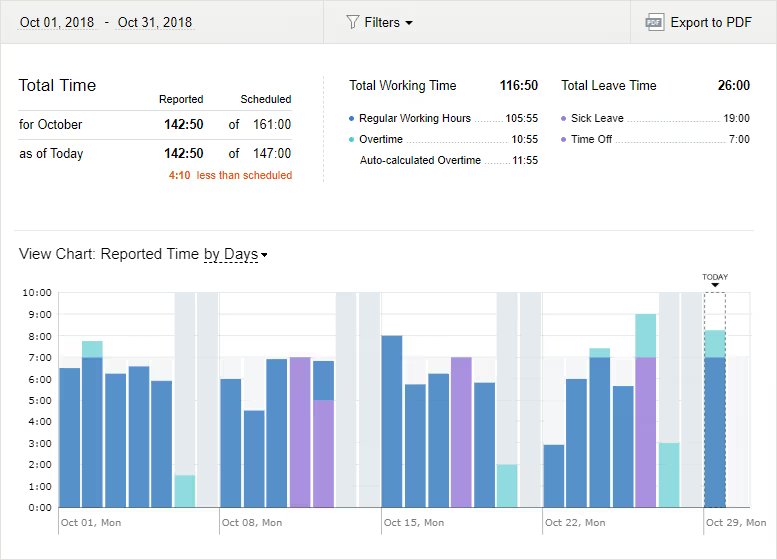
Team and project managers can see how their employees spend time on work assigned to them by summing up entire teams’ data. If the tool used for time-tracking supports comments, managers can also see what exactly has been done, or why a task took longer than expected.
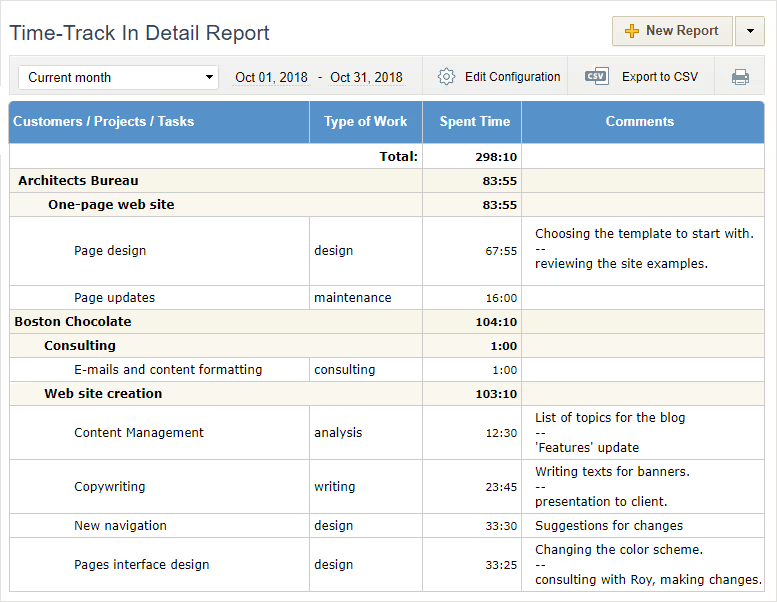
2. Reviewing team performance
Managers use time reports to see their team’s results for any period: week, month, quarter etc. Grouping data by specific work assignments, departments, or time periods, and comparing results between teams and projects is an efficient way to evaluate progress and understand efficiency of teams’ work.
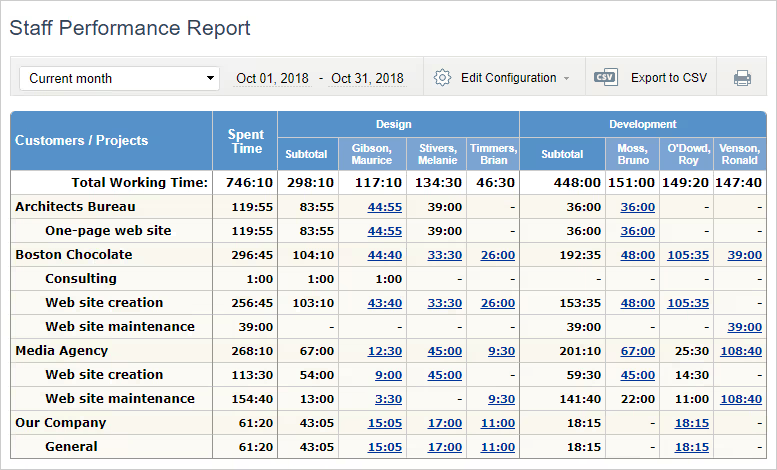
3. Improving estimation technique
Accurate estimation is the key point of efficient project management procedures. The easiest way to get reliable estimates for upcoming tasks is reviewing time spent on similar tasks in the past – and this is where time reports are of help. What’s more, they keep managers updated on current results, reveal possible problems with meeting deadlines, and justify changes to the project course.
1548685527011.png?fm=png&auto=format)
4. Identifying work distribution issues
Work distribution tends to turn into one of the most acute project management problems, especially in changing environments. Time reports can help identify overstaffing and understaffing problems by showing who is overworking and who’s not accumulating scheduled working hours. They also allow to calculate accurate overtime values by specific employees and entire teams.
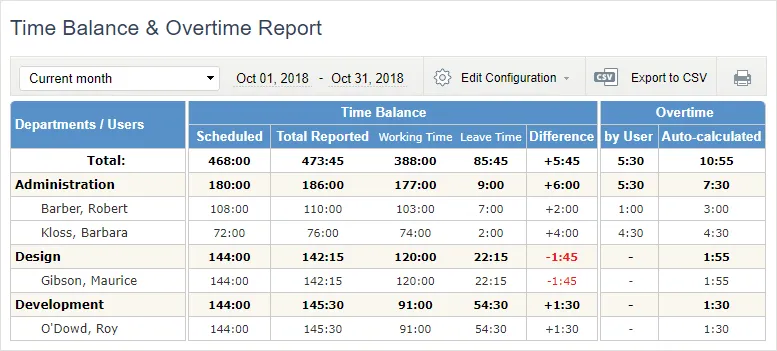
5. Managing absences on the team
Running time reports by leave time data is an efficient method of managing absences. They allow reviewing how leave time is spent by the employees and how it affects their resulting paid time-off and sick time balances. What’s more, leave time reports reveal seasonal dynamics and help make absences more predictable. This helps in work planning and team availability estimation.
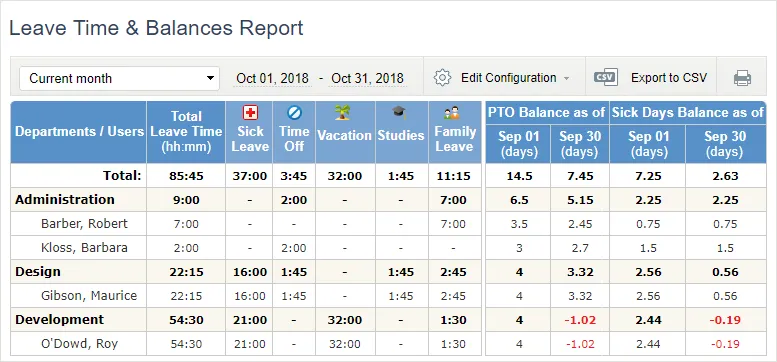
Summary
Time reports have been proven to be an efficient tool for team and project management. As each team and each project require their own way to evaluate progress and identify possible issues, the reporting tool used by the team needs to be configurable and flexible enough to be adapted to any specific need. This is especially true for changing environments and non-trivial work assignments.
Make sure that your time-tracking tool includes a flexible reporting module that allows running reports on various metrics. This will help you stay informed on team’s work progress, set realistic goals for future work, evaluate current results, and justify changes to deadlines and estimates if they’re necessary.







